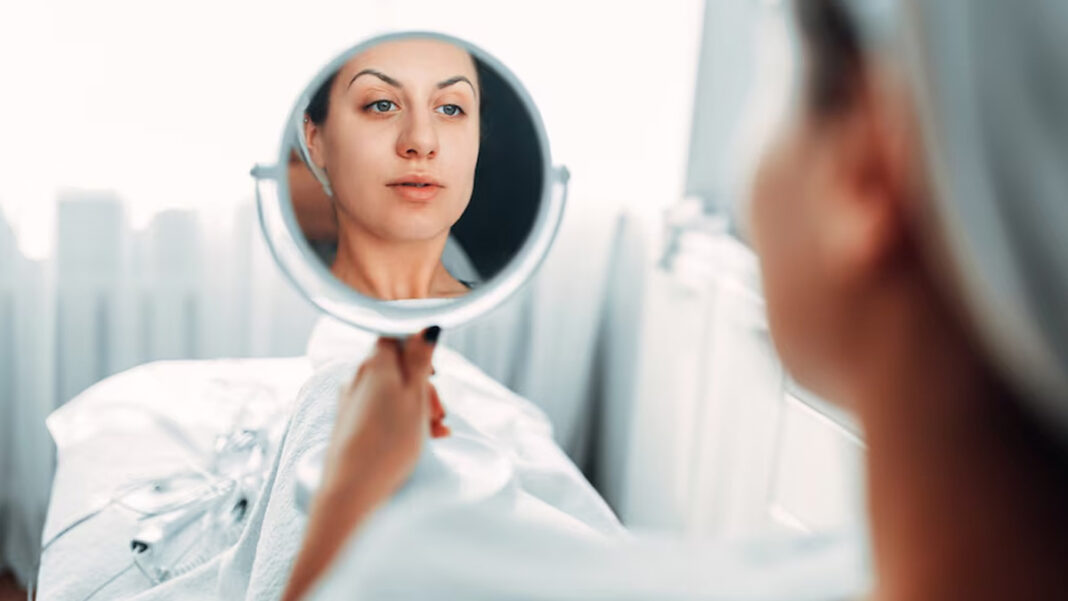Taking care of our skin is not just about looking good, it’s also about keeping it healthy. We often go for physical check-ups to ensure that our bodies are doing well, but it’s equally important to keep an eye on our skin’s health. By performing a skincare self-exam, we can spot early signs of skin problems, including skin cancer, and understand the overall health of our skin. We spoke to Dr Neha Khuraana, MD, Board-Certified Dermatologist and Founder, House of Aesthetics, who explained how to do a skincare self-examination. How To Do A Skincare Self-Exam? Here is a detailed guide on how to do a skincare self-exam, as explained by the expert: 1. Understanding the Importance of Self-Examination in Skincare Various skin conditions like eczema, psoriasis, and rosacea, and severe issues like skin cancer can be checked with regular self-skincare examinations. Moreover, if caught early they can be treated better. “Taking these self-exams can help you become familiar with the unusual appearance of your skin and you can notice any changes quickly. They can also help track the progress and effectiveness of your skincare routine”, said Dr Khuraana. 2. Identifying Common Skin Issues through Self-Examination “So, when you are checking your skin, what are you specifically looking at? You should essentially look for any new growths, moles, or changes in existing moles which include irregular borders, asymmetry, uneven colour, change in diameter, and overall change in appearance and size over time”, added Dr Khuraana. Other skin issues might include prolonged redness, dry patches, excessive scaling, or unusual skin texture which are indicators of skin diseases like psoriasis, eczema, or infections. Also Read: Skincare According To Age: Expert Answers What To Use At What Age? 3. Step-by-Step Guide to Conducting a Skin Care Self-Exam Prepare: You need to have a full-length mirror along with a hand-held mirror to have a complete view of yourself. Also, choose a well-lit place Check your body front and back: First, start by examining the front of your body and then turn around to see the back Check less visible areas: Using the hand-held mirror, check your neck, scalp, your back, and lower part of your body and examine thoroughly Inspect extreme conditions: Check your hands, between fingers, arms, underarms, feet, legs, and in between toes Special attention: Make sure to have a closer look at your private body parts as well 4. Tools and Techniques for Effective Skin Self-Examination Having a full-length mirror and a hand-held mirror would be necessary to conduct this self-exam. Also, choosing a space having good lighting would ensure that you do not miss out on any part. You can keep notes of any changes or take pictures to keep track of the future. Also Read: Can Blue Light Accelerate Skin Ageing? Expert Explains Its Effect On Skin Interpreting Findings: What to Look for During a Skin Self-Exam Dr Khuraana highlighted, “If you see any new injury, bruise, or tear on the skin, you should observe that. Note down any painful, itchy, bleeding, or non-healing lesions. Keeping these notes would help when you consult a medical professional.” Incorporating Self-Examination into Your Regular Skincare Routine It is recommended to perform a monthly self-exam, just like how we follow a skincare routine daily. You can choose a specific day, such as the first Sunday of every month, to perform this procedure, which makes it easier to remember. The Skin Cancer Foundation advises conducting routine self-examinations and scheduling yearly professional skin evaluations with a specialist. Individuals with a history of skin cancer might require professional assessments every 3-6 months. When to Seek Professional Help: Recognising Signs that Require Medical Attention “If you notice any changes that seem abnormal or suspicious, consult a dermatologist immediately. Early professional help can be beneficial in understanding any disease or condition and providing instant care and preventive measures. This simple self-care exam can be a great way to understand your skin better and maintain its health”, highlighted Dr Khuraana. [Disclaimer: This article contains information provided by an expert and is for informational purposes only. Hence, we advise you to consult your expert if you notice any skin complications to get the necessary treatment.]Read NextWhat is Tretinoin? Here’s How It Protects Your Skin Against AcneDisclaimer All possible measures have been taken to ensure accuracy, reliability, timeliness and authenticity of the information; however Onlymyhealth.com does not take any liability for the same. Using any information provided by the website is solely at the viewers’ discretion. In case of any medical exigencies/ persistent health issues, we advise you to seek a qualified medical practitioner before putting to use any advice/tips given by our team or any third party in form of answers/comments on the above mentioned website.
